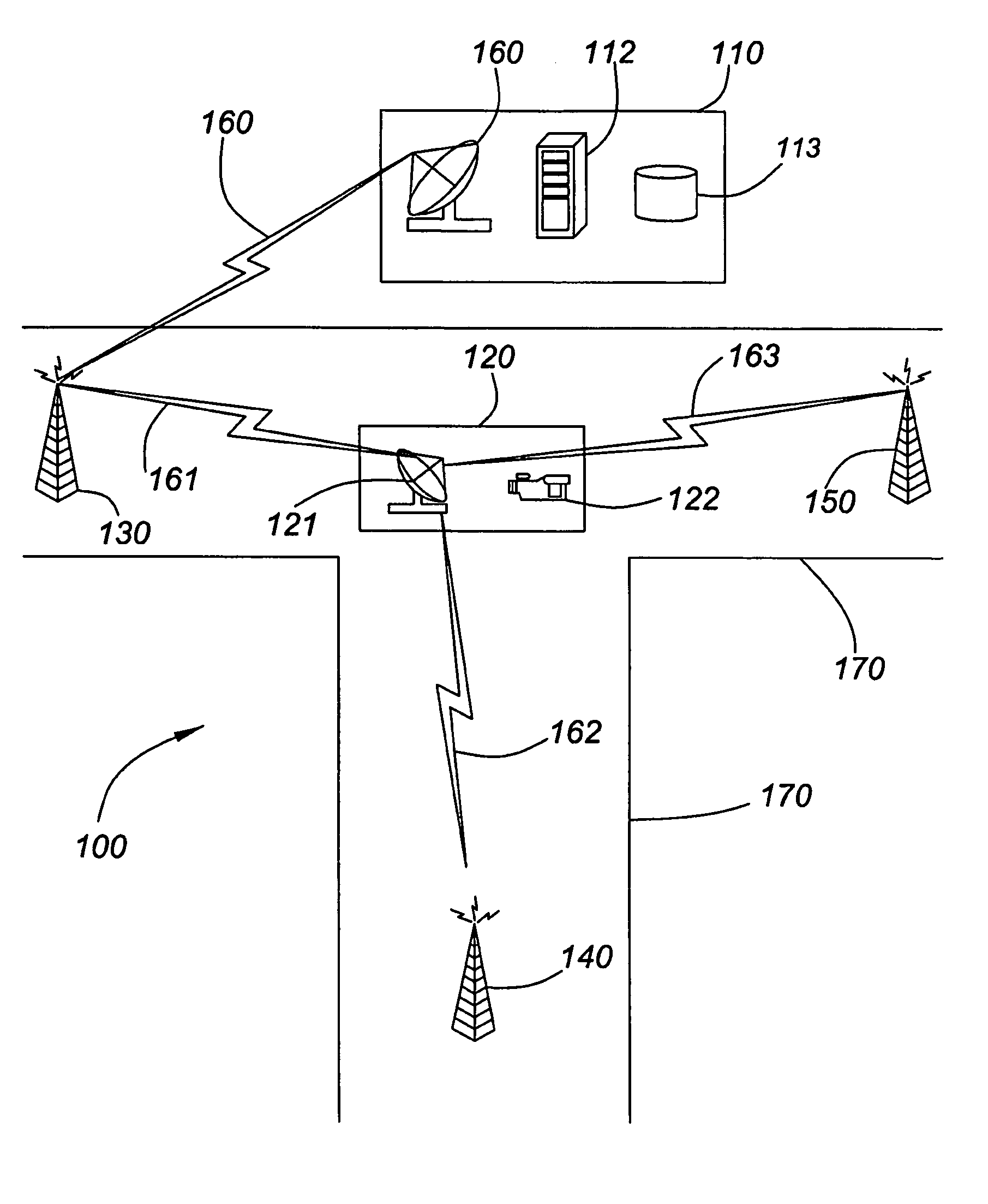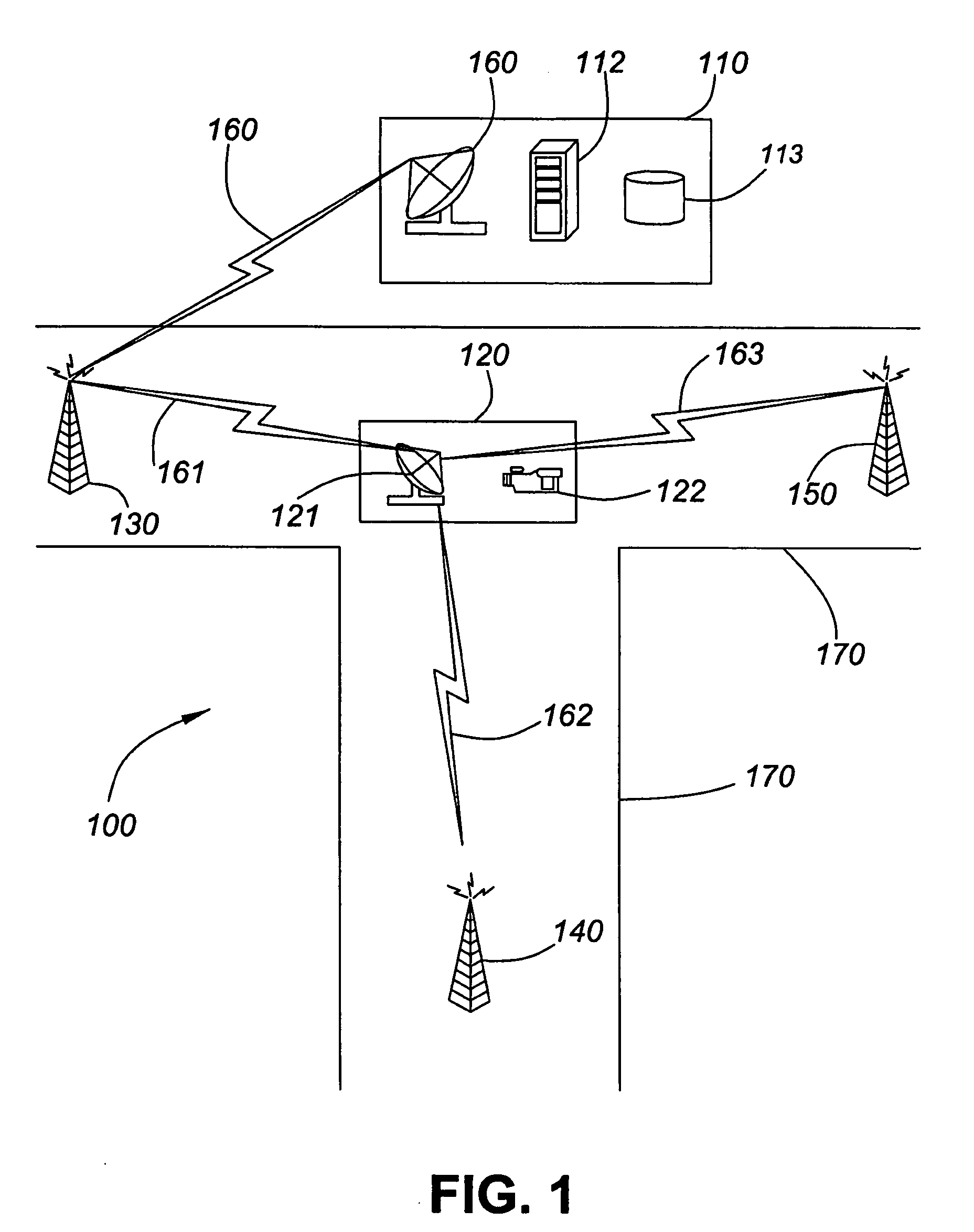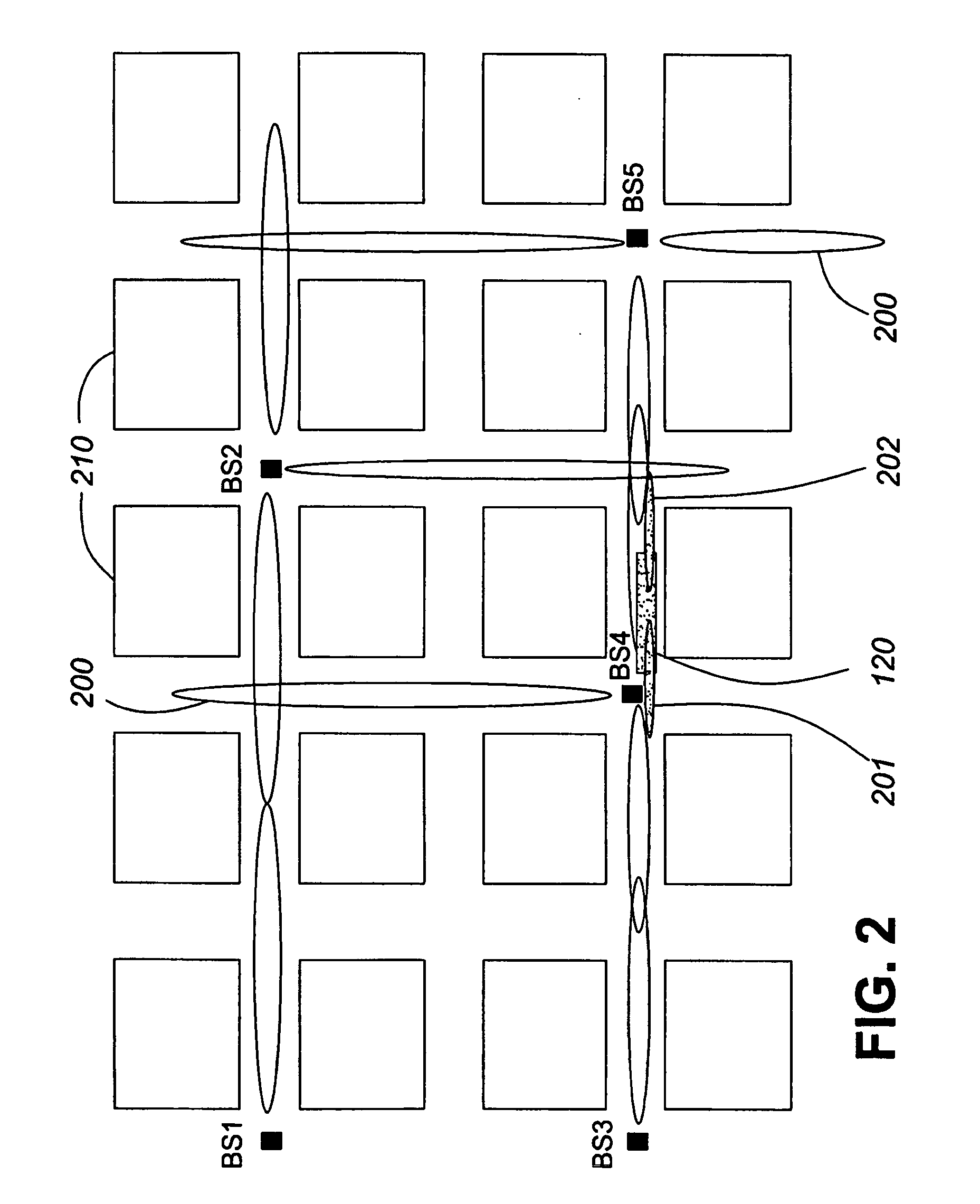Method and system for handover in cellular wireless using route programming and training processes
a technology of route programming and process, applied in the field of managing radio link handover, can solve the problems of small delay associated with considerable time, e.g., several seconds
- Summary
- Abstract
- Description
- Claims
- Application Information
AI Technical Summary
Benefits of technology
Problems solved by technology
Method used
Image
Examples
Embodiment Construction
[0032] Generally, the present invention provides a method and system for managing radio link setup and disconnect between base stations and subscriber stations. The present invention alleviates disadvantages of especially small cell wireless protocol that do not have handover protocol. The present invention avoids use of conventional handover techniques so as to prevent excessive radio links from occurring. The present invention is useful, among other applications that will become apparent to one of ordinary skill in the art of networking, in applications where the subscriber station (e.g., mobile station) follows a known route that has a series of base stations along and beside the same route. The present invention includes methods for selecting the optimum base stations for best operating range and data throughput. Ideally, the present invention assists in reducing control traffic as such control traffic often reduces actual payload capacity. The present invention also minimizes o...
PUM
 Login to View More
Login to View More Abstract
Description
Claims
Application Information
 Login to View More
Login to View More - R&D
- Intellectual Property
- Life Sciences
- Materials
- Tech Scout
- Unparalleled Data Quality
- Higher Quality Content
- 60% Fewer Hallucinations
Browse by: Latest US Patents, China's latest patents, Technical Efficacy Thesaurus, Application Domain, Technology Topic, Popular Technical Reports.
© 2025 PatSnap. All rights reserved.Legal|Privacy policy|Modern Slavery Act Transparency Statement|Sitemap|About US| Contact US: help@patsnap.com



